From North to South Vietnam, Vietnamese cuisine presents an incredible variety of flavors, textures and combinations. Discover the rich cuisine of South Vietnam through its essential specialties!
Short overview of Vietnamese cuisine
Creative and incredibly diverse, the cuisine of Vietnam reflects a nation and its history, through influences as marked as multiple: we will see French influences, Chinese as well as Cambodian and Thai make their way into the cuisine of the Two Deltas Country.
The most commonly used ingredients that characterize Vietnamese cuisine are: rice, fish sauce, shrimp paste, soy sauce, fresh herbs and vegetables. Wherever you travel to Vietnam, the cuisine will always incorporate these elements, but the type of dishes will mainly reflect the climate, history, seasons and access to products. As well as the region. To give you an idea, Vietnam is a long country, stretching a little over 1,600 km, the equivalent of a Brussels-Madrid. This is to say the differences in climate, landscapes, ethnic, cultural and historical diversities, not to mention the incredible variety of flavors in the cuisine of Vietnam.
Recall that the lands of the South were annexed only between the 15th and 17th centuries, with their heterogeneous population of people from semi-military agricultural colonies, prisoners, landless farmers and adventurers descended from the North, but also Chinese immigrants and indigenous Cham and Khmer. The result is a region that is less traditionalist than the North and less ceremonial than the Centre, more casual in appearance, perhaps more turbulent and exuberant, but with a significant touch of nonchalance. This behavior is reflected in the way we eat and what we put in the bowls.
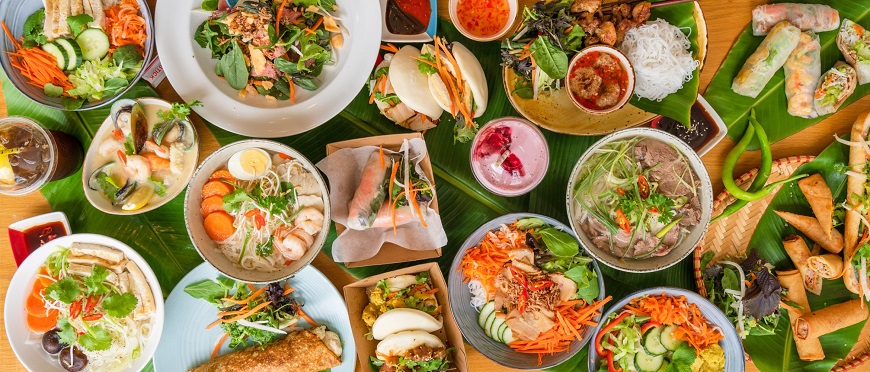
Treasures of South Vietnam Cisine - Photo : Internet
Features of South Vietnam cuisine
What dominates the culinary theatre of the South are the fresh colors and textures, in an abundance of fruits, herbs and vegetables. Never miss on the table, as an accompaniment, a nice handful of coriander, basil and/ or bean sprouts, not to mention the fiery touch of some peppers. Here, the flavors are strong, powerful and bold but the dominant remains the sweet, under the warm flavors of star anise and cinnamon. Relatively simple but original, southern cuisine is also distinguished by its opulence with Chinese, Cambodian and Thai influences.
This region that the French settlers called Cochinchina enjoys a particularly mild climate and fertile land (especially in the Mekong Delta). A combo that brought out the nickname of Vietnam Rice Loft to qualify the South Delta. Opulence we said, but relative simplicity of dishes, including in their preparation, southern cuisine preferring short cooking times to preserve flavors and freshness. However, the South also comes with its rather improbable menu of coconut worms, snakes, rats and other bats (Perhaps in memory of the times of conquest, when it was necessary to clear and brush the forests of cajeputs and that it was necessary to be satisfied with what the local swamps offered lightly). There are a few signature dishes to enjoy during any stay in Nam Bo.
The emblematic dishes of South Vietnam cuisine
Hu Tieu – Saigon Soup
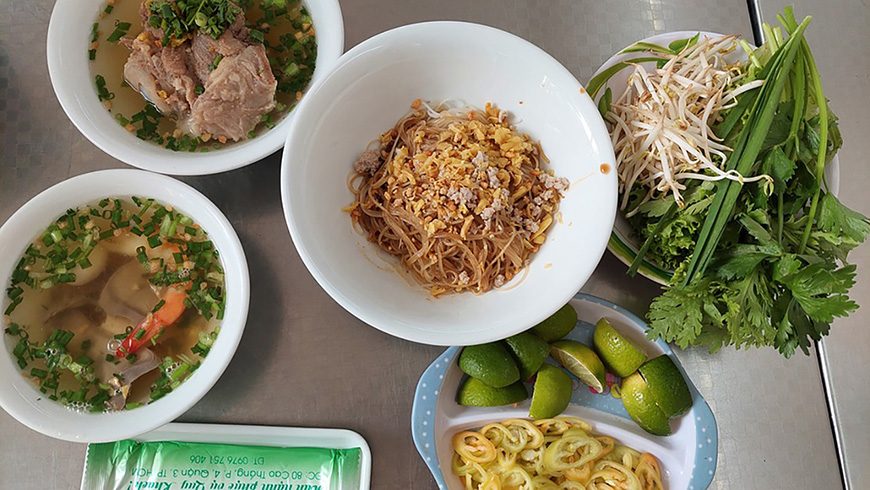
Hu Tieu, emblematic soup of My Tho - Picture : © Pixabay
The North has the Pho, the South, the Hu Tieu, which can be served as a soup, under the name of Hu Tien Nuoc, or without broth (served in a bowl apart), under the name of Hu Tieu Kho. Originally from Cambodia, Hu Tieu Nam Vang gained popularity during the 1960s.
It consists of a broth in which pork bones and dried shrimp simmer. There are seafood, pork tenderloin and liver, shrimp, a quail egg, cabbage or lettuce and pasta made from tapioca. Emblematic of My Tho, Hu Tieu is rather taken at breakfast, seasoned with chopped chives, fried shallots, bean sprouts and garlic.
To be exact, the most widespread Pho in the world comes from the South, simply because the refugees who fled in the 1970s and 1980s came mainly from the South. Although originally from the North, people from the South have adapted Pho to their own tastes, including incorporating more cinnamon and especially adding bean sprouts.
Banh Xeo - Made in Vietnam Pancake
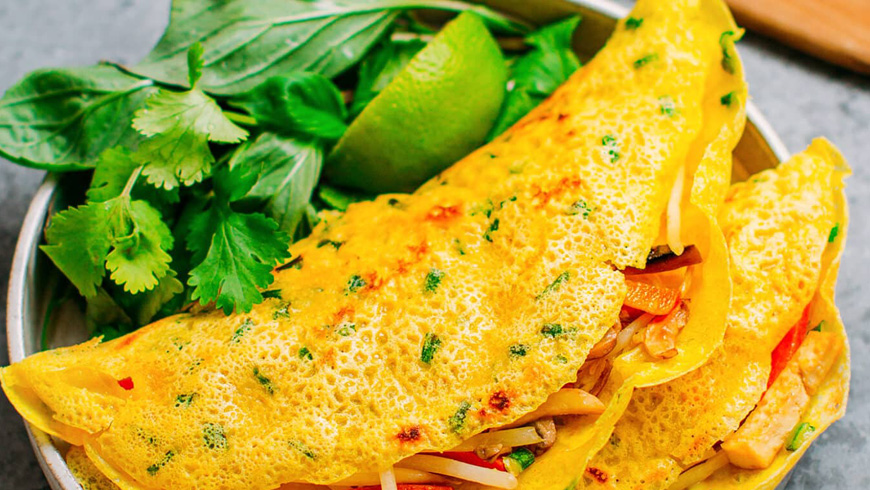
Banh Xeo, the Vietnamese Pancake - Picture : Internet
If nowadays we find Banh Xeo everywhere in Vietnam (and under a thousand variations), this kind of pancake is native to the South. In fact, we are closer to the Korean Jeon than to the Breton galette…
Based on rice flour, and getting its beautiful golden color from turmeric, Banh Xeo is delayed with coconut milk. Once cooked (it is the sizzle that makes the dough in the pan that gives it its name), it will be folded so that it can be generously topped with ground pork, shrimp and bean sprouts. In the South, mushrooms, bacon, lotus root are added… Accompanied by faithful lettuce and aromatic herbs, with some mustard leaves. The dip is a classic nuoc mam base in which dabble grated carrot, garlic and chili.
Banh Mi – Vietnamese French Sandwich
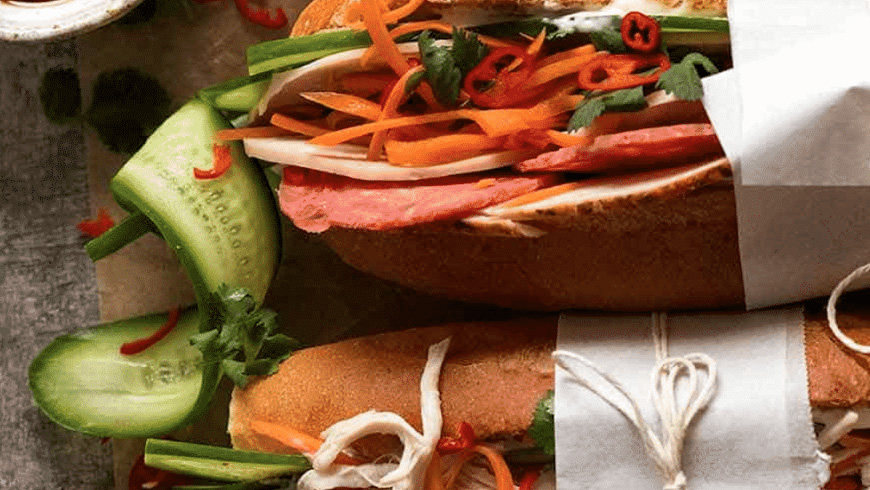
A french touch with this Banh Mi - Picture : Internet
Heritage of the French presence, the Banh Mi is absolutely everywhere in the Land of Uncle Ho, but it is that of Saigon which is certainly the best of all the regional Banh Mi.
There is no secret to this typically Saigon success, except the quality of the bread, more crispy, softer and lighter than what can be obtained elsewhere. That being said, we don’t really know where this inimitable crunch comes from. From the rice flour/wheat flour mixture? From the climate? However, the bread generously welcomes carrots and white radishes marinated in vinegar and grated, coriander, soy sauce and meat prepared in the local style or fried eggs or omelette. The variations have no limits but the creativity of the one who prepares the Banh Mi. Can be enjoyed at any time and calms down all cravings!
Com Tam – Ric Three Treasures Rice
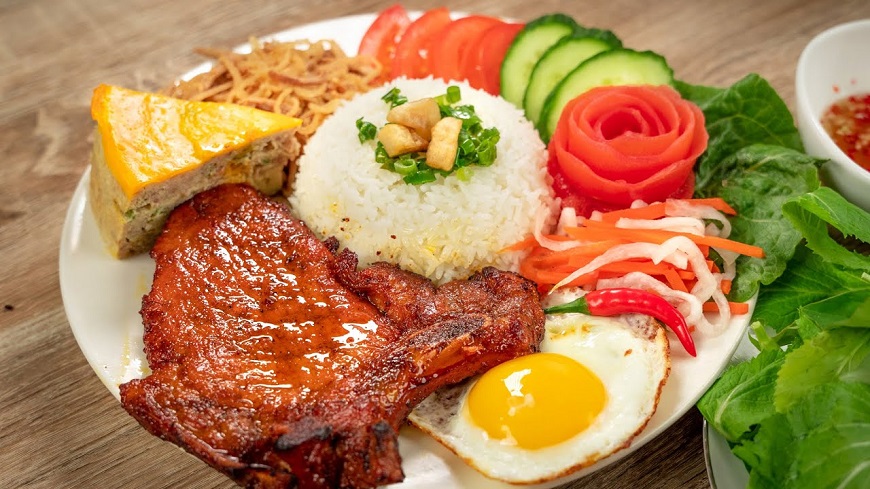
Com Tam, one of the most emblematic dishes of South Vietnam Cuisine - Picture : Internet
One of the most emblematic dishes of South Vietnam cuisine.
Com Tam is broken rice. In the past, the rice was sifted three times and what remained after these three passages was the broken rice, meagre pittance of times of famine. Modest in its origins, this dish became popular in the former Sai Gon (now Ho Chi Minh City) from the first half of the 20th century. Nicknamed “Paris of Asia”, Sai Gon opened up to travellers and thus to the world, thereby facilitating the spread of a unique culinary culture, including in its most modest dishes, so Com Tam. It is also to adapt to Western visitors that the modest Com Tam, which has become a culinary emblem of the South, is served on a plate with its spoon. If there are dozens of variations today at Com Tam, the base – the one called Three Treasures – sees rice in the company of marinated and grilled pork chops, pulled pork rind delicately flavoured with roasted rice powder and a steamed egg. Marinated vegetables, a few slices of tomato and cucumber add freshness and crunch. Dip on a base of nuoc mam in sour-sweet version.
Chao Ca Loc - Catfish Rice Congee
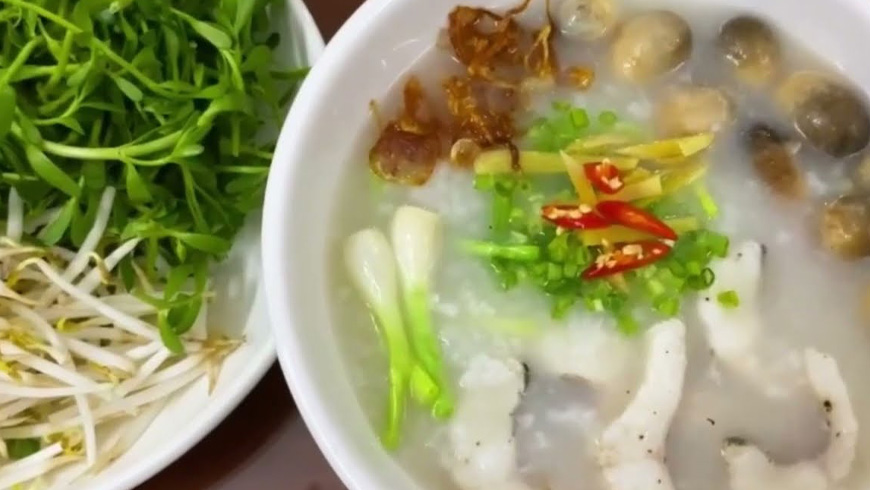
Delicious and healthy Chao Ca Loc - Picture : Internet
You will only taste this dish in the Mekong Delta and nowhere else.
And more precisely in Can Tho, the capital of the South Delta. Surprising (this dish is cooked with bitter vegetables) but delicious, Chao ca loc is enjoyed for breakfast, accompanied by mushrooms, bean sprouts (mung bean sprouts), onions and shallots.
Lau - Seafood Fondue
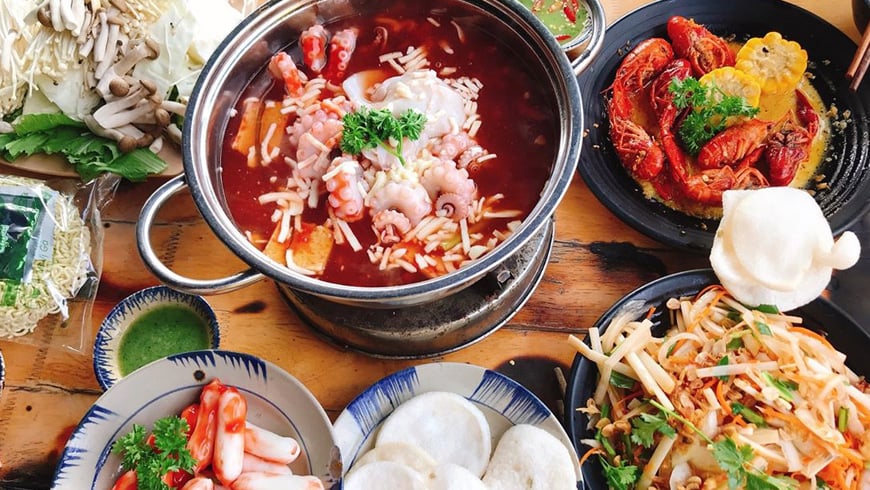
Lau Hai San - Picture : Internet
Unsurprisingly, the South of the country is famous for its seafood, hence the popularity of this broth placed in the middle of guests and in which you cook strips of fish, cuttlefish, shrimp, crab, but also herbs and vegetables. At the end of cooking, when all the flavors have infused well, noodles are added.
The fish with elephant ears
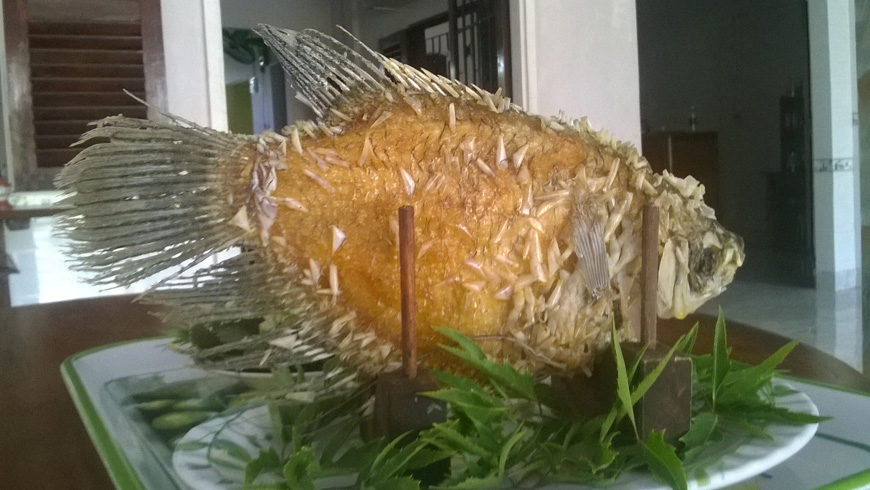
Suprising Fish with Elephant Ears - Picture : Wikimedia
An absolute must-eat, which you will find both in a restaurant and during a cruise on the Mekong.
We are here on fried fish which has the particularity of being presented vertically, on a wooden display. Each guest then comes to peck with his chopsticks a piece of flesh that he will place in a rice leaf with a little salad, mint, vegetables and finely chopped fruits. We roll and dip in a sauce. Exotic, unusual and delicious!
Banh Pia – Durian Cake
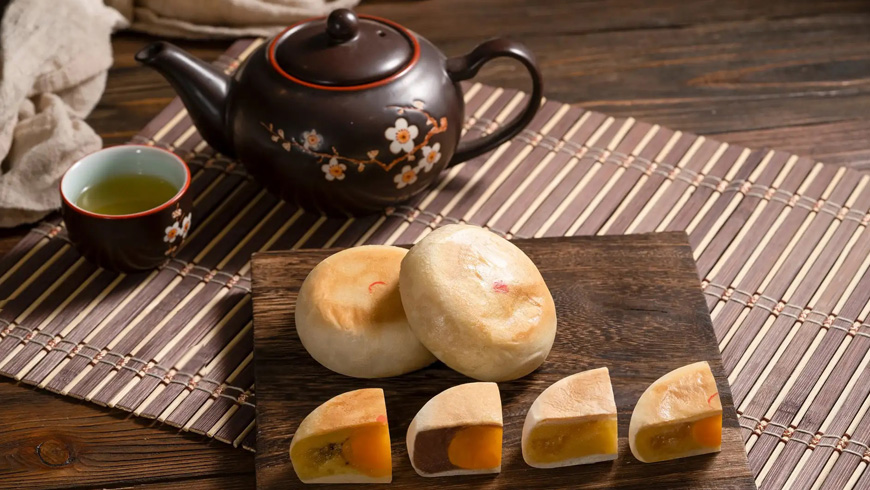
Banh Pia, a taste of South - Picture : Internet
Finish our panorama of South Vietnam cuisine with a typical sweet note: Banh Pia.
It is said that this recipe originated in Chao Zhou, South China and was brought in the 17th century by Chinese migrants in Soc Trang Province. Basically, Banh Pia was simplicity: a puff pastry prepared with wheat flour and stuffed with pork. Nowadays, the famous southern cupcake is rich in a rather improbable mixture of durian, lard, salted egg yolk, mung bean paste, taro and (unsurprisingly) coconut.
Can be enjoyed mainly for the Mid-autumn or Lunar New Year Tet.
Do not miss to read :